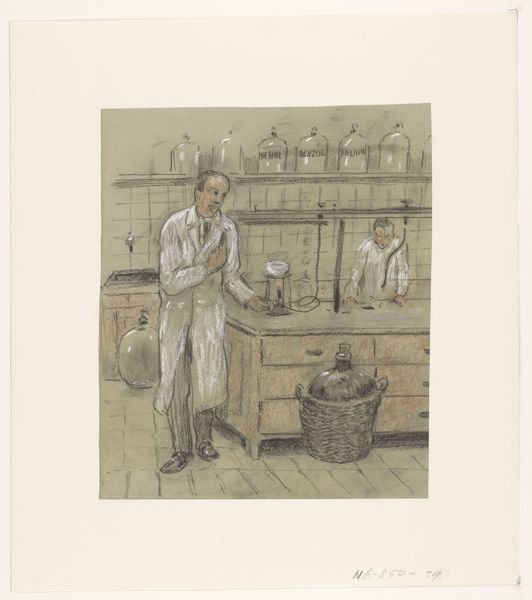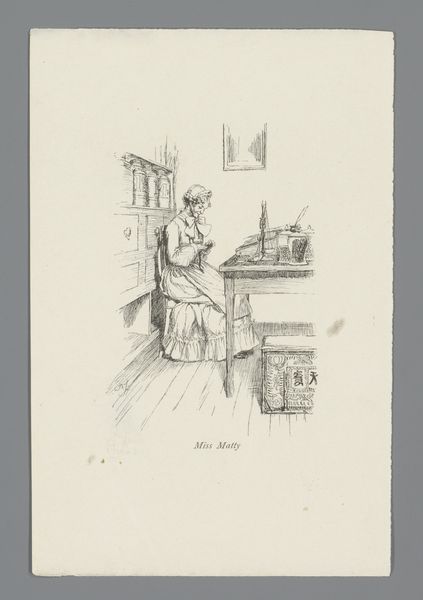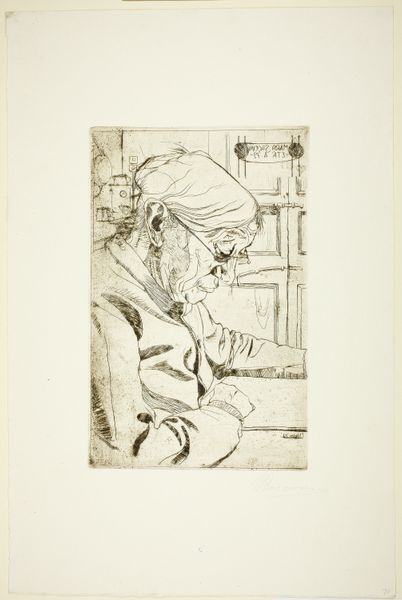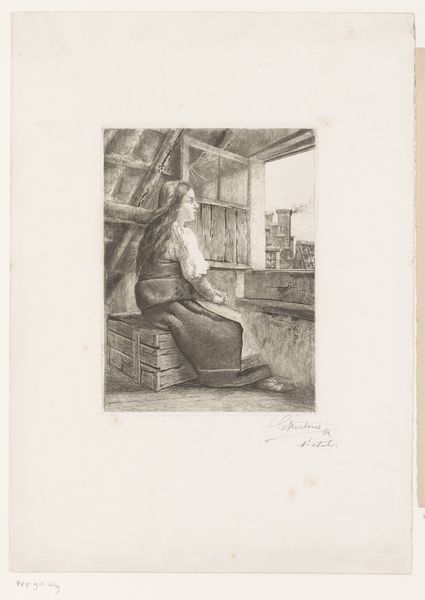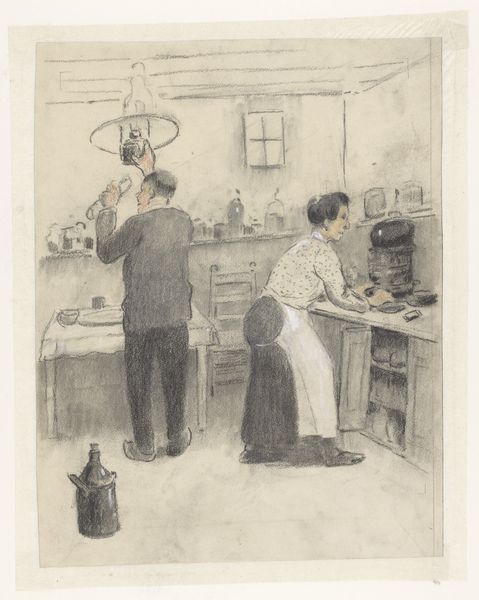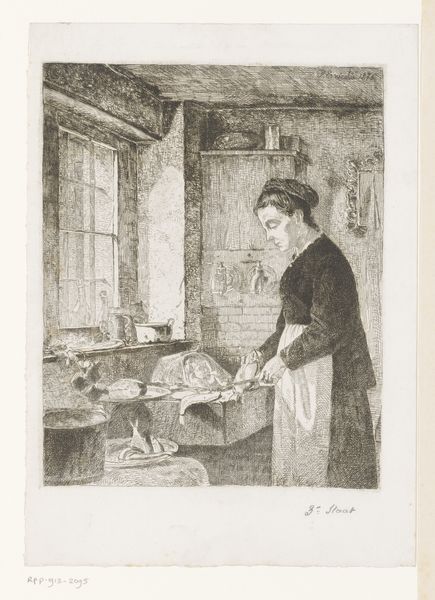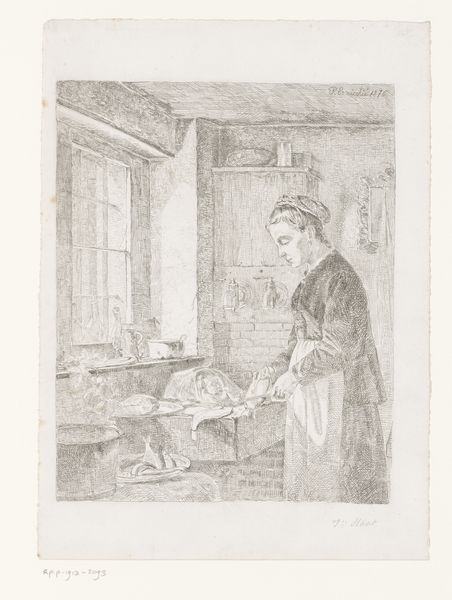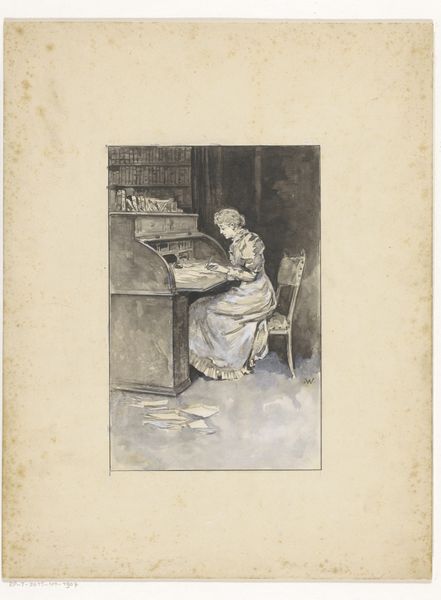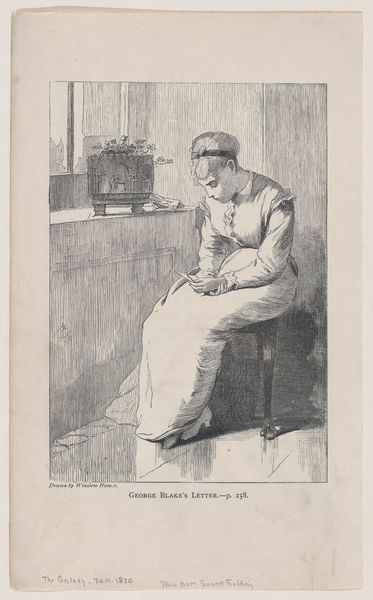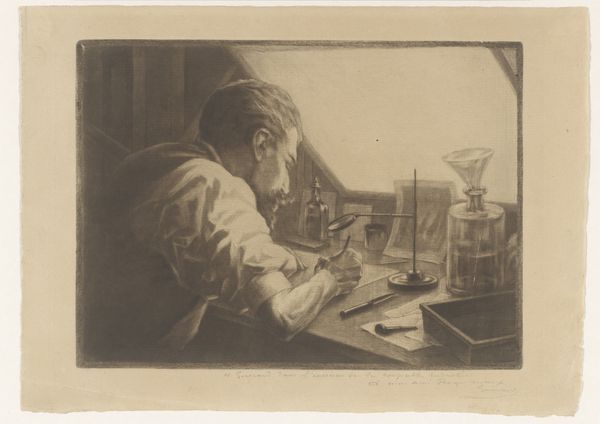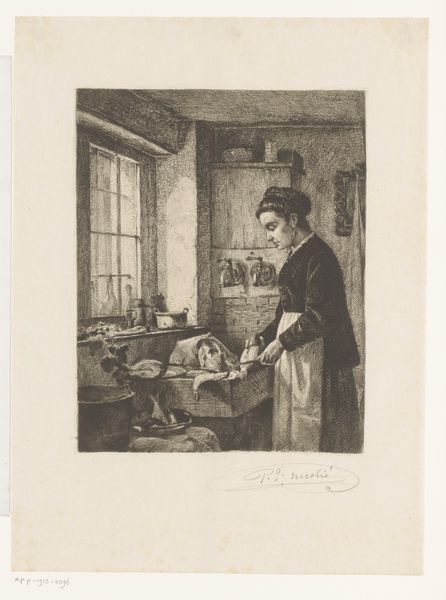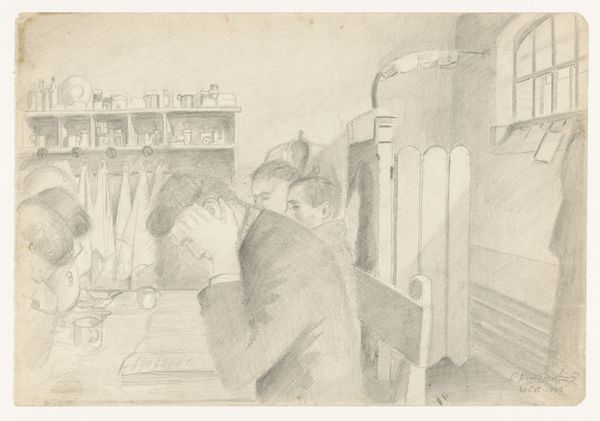
drawing, paper, charcoal
#
portrait
#
drawing
#
pencil sketch
#
paper
#
genre-painting
#
charcoal
#
modernism
#
realism
Dimensions: height 294 mm, width 244 mm
Copyright: Rijks Museum: Open Domain
Curator: What strikes me immediately is the subdued palette; it speaks of diligence but also, perhaps, the quiet solitude that often accompanies scientific work. Editor: Indeed. We're looking at "Woman in Laboratory," a pencil and charcoal drawing on paper by Herman Heijenbrock, created sometime between 1900 and 1925. Heijenbrock often depicted industry and labor, but this piece feels unusually intimate. Curator: The laboratory setting is rich in visual cues. All those bottles and jars suggest a realm of alchemical experimentation, but her focused gaze speaks of careful empiricism. Do you think Heijenbrock meant to portray a certain archetype? Editor: Absolutely. During this period, women in science were often fighting for recognition in male-dominated fields. Her poised stance and serious demeanor push back against expected gender roles; there’s a statement of purpose in the composition itself. Curator: I find the contrast between the sharp lines of her coat and glasses and the softer shading of her face rather telling. It is like seeing the duality of human versus rationality. Editor: It highlights a really crucial intersection of that era, as gender defined one’s identity while also informing biases in science, politics, art, and just about everything else. Do we celebrate her unique ability to synthesize this? Curator: I appreciate the detail given to her surroundings – the tools, the shelves. They are ordinary, commonplace – but charged with the potential for discovery, for transformation. A clock hangs in the background as well, speaking to the passage of time required for these insights to be realized. Editor: It is almost defiant – presenting a common worker as an intellectual protagonist in her environment, making a quiet feminist claim that still holds resonance today. Curator: Yes. I keep seeing her as both an individual and a symbol of a broader historical shift in gender dynamics in the early twentieth century. It is striking to remember how groundbreaking an image like this could be at the time. Editor: The drawing reminds me that art can participate in the project of re-evaluating these historical forces by opening them up to renewed conversation. It's important to bring the conversation into the present as we look back at her place in science and art.
Comments
No comments
Be the first to comment and join the conversation on the ultimate creative platform.
